Voyager 1's Historic Flyby of Jupiter in Photos

On the Job
On March 5, 1979, NASA's Voyager 1 flew by Jupiter, the largest planet in the solar system, in a historic encounter with the largest planet in our solar system. The photos of Jupiter beamed back by Voyager 1 were amazing, as was the science they returned. See Voyager 1's most amazing photos of Jupiter and its moons in our gallery here.

Parts of a Whole
Voyager 1 and 2 launched in 1977 to explore the cosmos. Voyager 1 took a series of images of Jupiter, which were compiled to create this mosaic of one entire hemisphere of the planet.
While the two spacecraft were originally designed for a five-year mission to explore Jupiter and Saturn, their successes and reliability allowed for additional exploration of Uranus, Neptune and more.
Credit: JPL
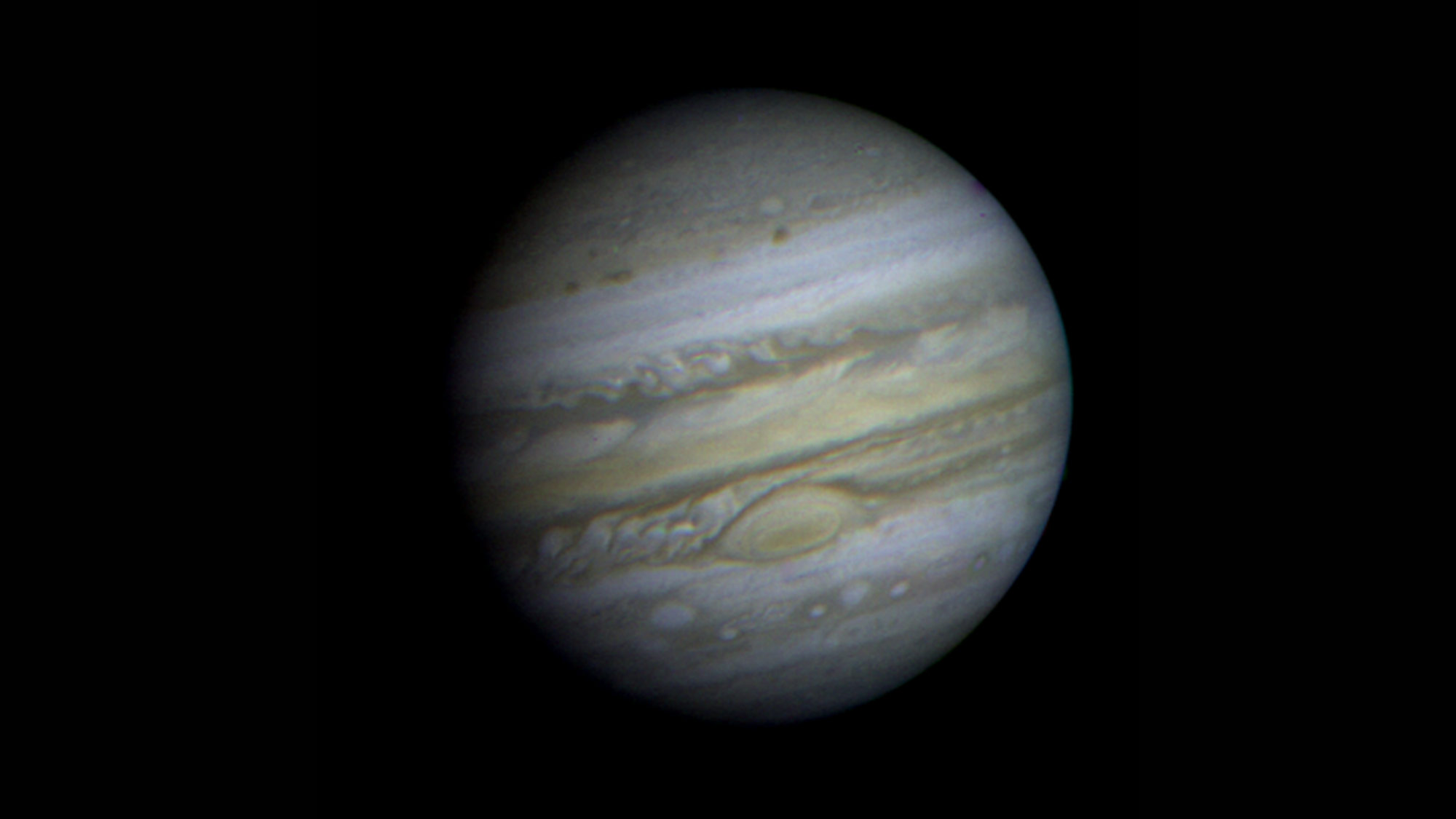
Standing Out in the Cosmos
Voyager 1 took three separate photos, using three different color filters, of Jupiter this day in 1979. Back on Earth in the Image Processing Lab at Jet Propulsion Laboratory, the images were combined, creating this colorful and breathtaking view of the Jovian planet.
Credit: JPL/NASA

A Planet and Two Moons
Io, Europa and Jupiter pose for a family photo. Io seems almost caught in Jupiter's Great Red Spot and glows with a very different color from Europa. Europa, on the other hand gives away very little detail about its composition with a glance from such a distance.
Credit: JPL/NASA

Jupiter's Night Light(s)
From within Jupiter's shadow Voyager 1 sent home this image detailing the planet's north pole, an aurora in action and possibly even some lightning. The image itself was taken over a long exposure of 3 minutes, 12 seconds with a wide angle camera.
Credit: JPL/NASA
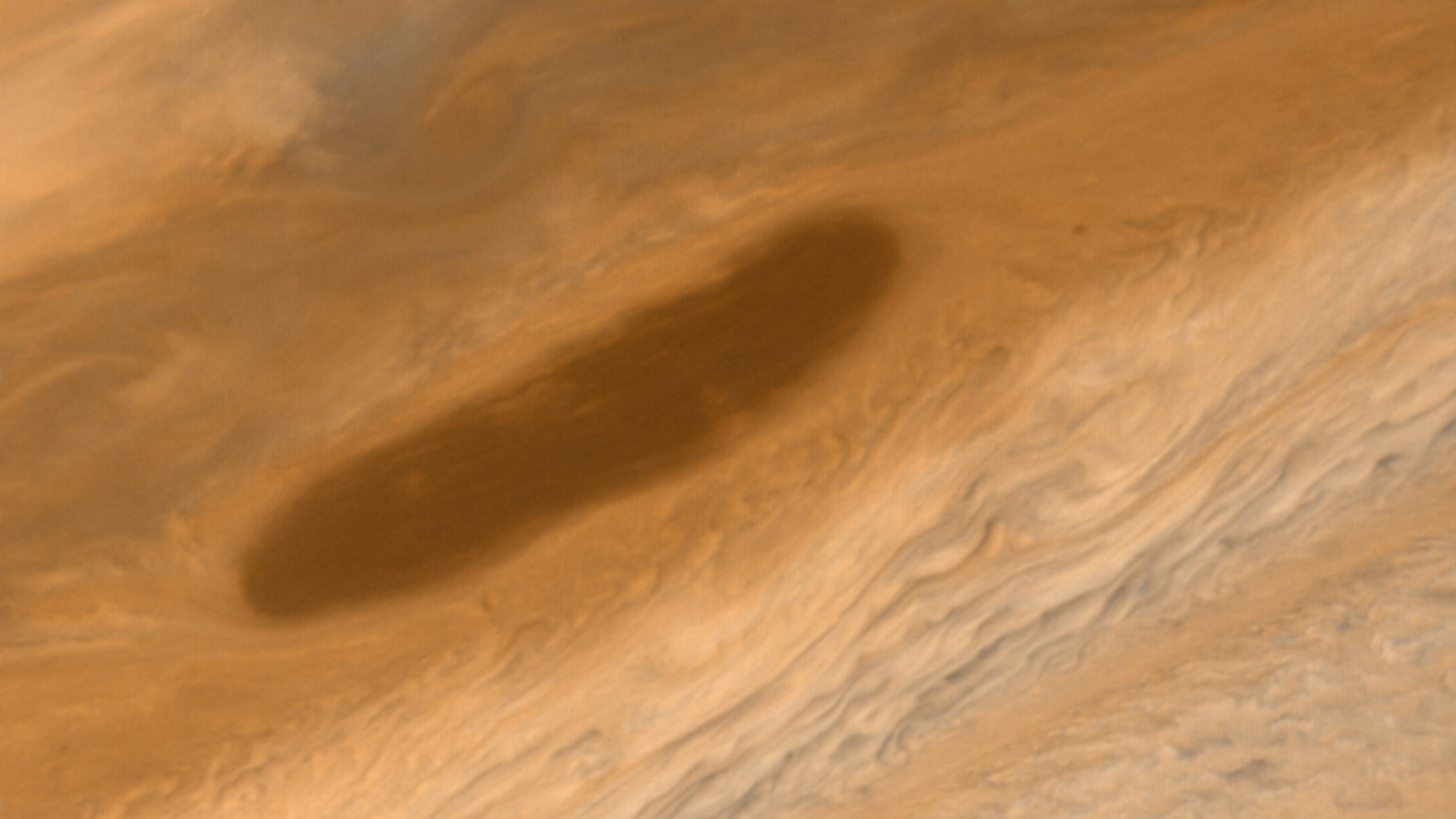
A Window Inside?
Researchers believe this large brown oval, which was imaged Mar. 2, 1979, could allow a view into lower cloud levels of Jupiter if studied more closely.
Just above the brown spot lies the pale orange North Temperate Belt bordered to the south by the high speed North Temperate Current which moves with wind speeds up to 260 mi/hr (120 meters/sec).
Credit: JPL/NASA
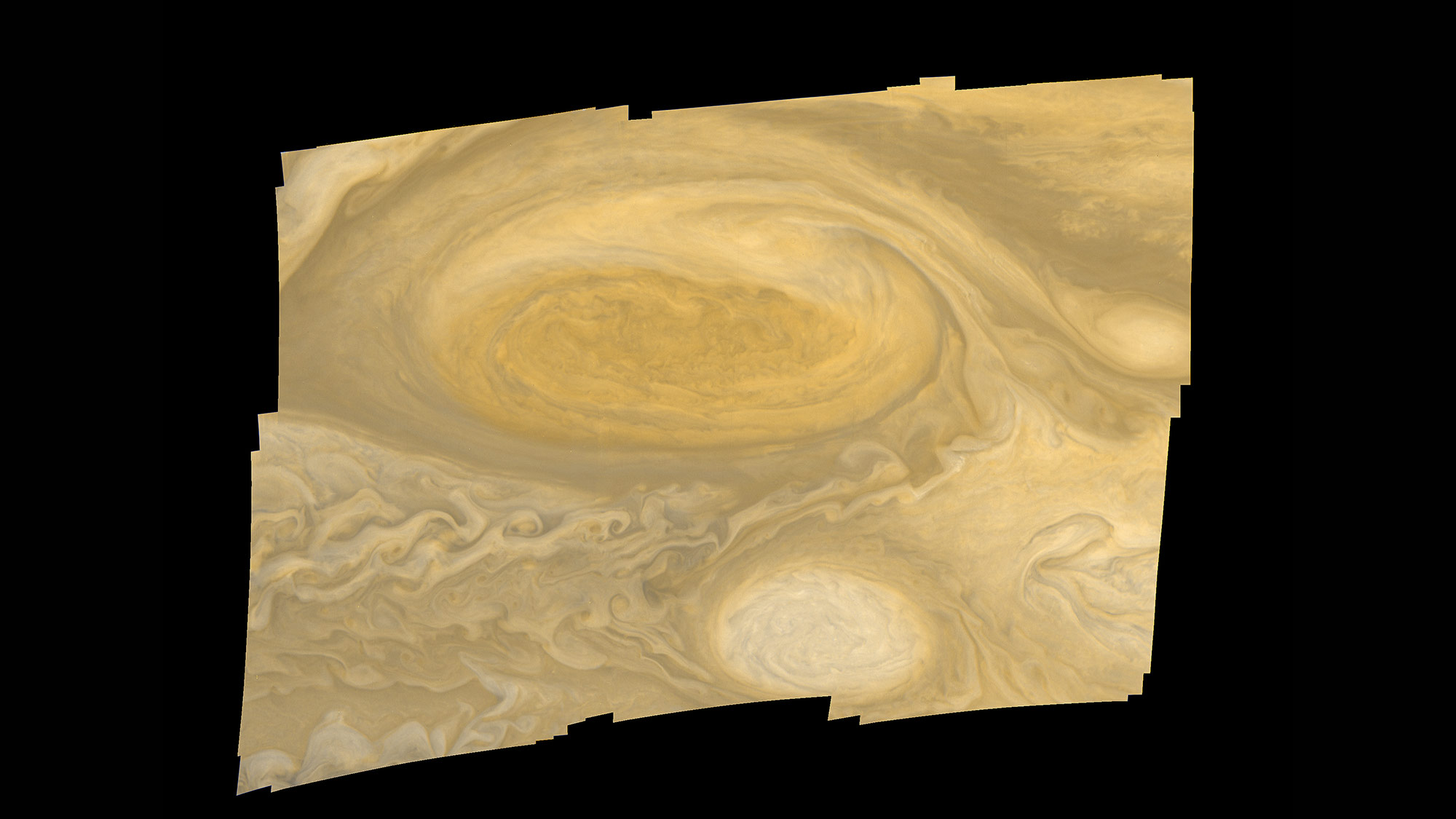
A Big Ol' Spot
In early March 1979, Voyager 1 collected this image of the Great Red Spot and some other surrounding atmospheric activity. The smallest white ovals featured are 20 miles (30 km) across, some of which were observed four decades ago, at formation. The different disturbances in Jupiter's atmosphere move around the planet at different speeds.
Credit: JPL/NASA

Such Beautiful Contrast
Just below Jupiter's Great Red Spot, the planet's atmosphere has a great variation of textures and patterns. Using special computer processing, these details are enhanced to enable study in hopes of deepening understanding of the Jovian atmosphere.
Credit: JPL/NASA

Ring Around the Jupiter
On Mar. 4, 1979, this multiple exposure image provided the first evidence of a ring around the Jovian planet. Stars in the image appear as broken hairpins resulting from Voyager 1's motion during the more than 11 minute exposure. The image successfully completed it mission of searching for such rings at Jupiter.
Credit: JPL/NASA

The Galilean Moons of Jupiter
In 1610, Galileo Galilei observed these four moons orbiting Jupiter. As a result, the group is referred to as the Galilean satellites of Jupiter. Shown here the relative sizes are compared — Io, on the top left; Europa, on the top right; Ganymede, on the bottom left; and Callisto, on the bottom right.
Ganymede and Callisto are larger than planet Mercury while Io and Europa are similar in size to Earth's moon. Io consists of active volcanoes and likely has a sulfurous composition. Ganymede and Callisto appear to consist mainly of water and water ice. Europa's make up is still largely a mystery waiting to be solved.
Credit: JPL/NASA

Active Volcanoes
To create this image of Jupiter's Io, several photos of the moon were snapped by Voyager 1 on Mar. 4, 1979. Centered on the moon a circular element has been connected to an known erupting volcano while across the image similar features can be identified. Io is the first-known body, other than Earth, where active volcanism has been seen.
Credit: JPL/NASA
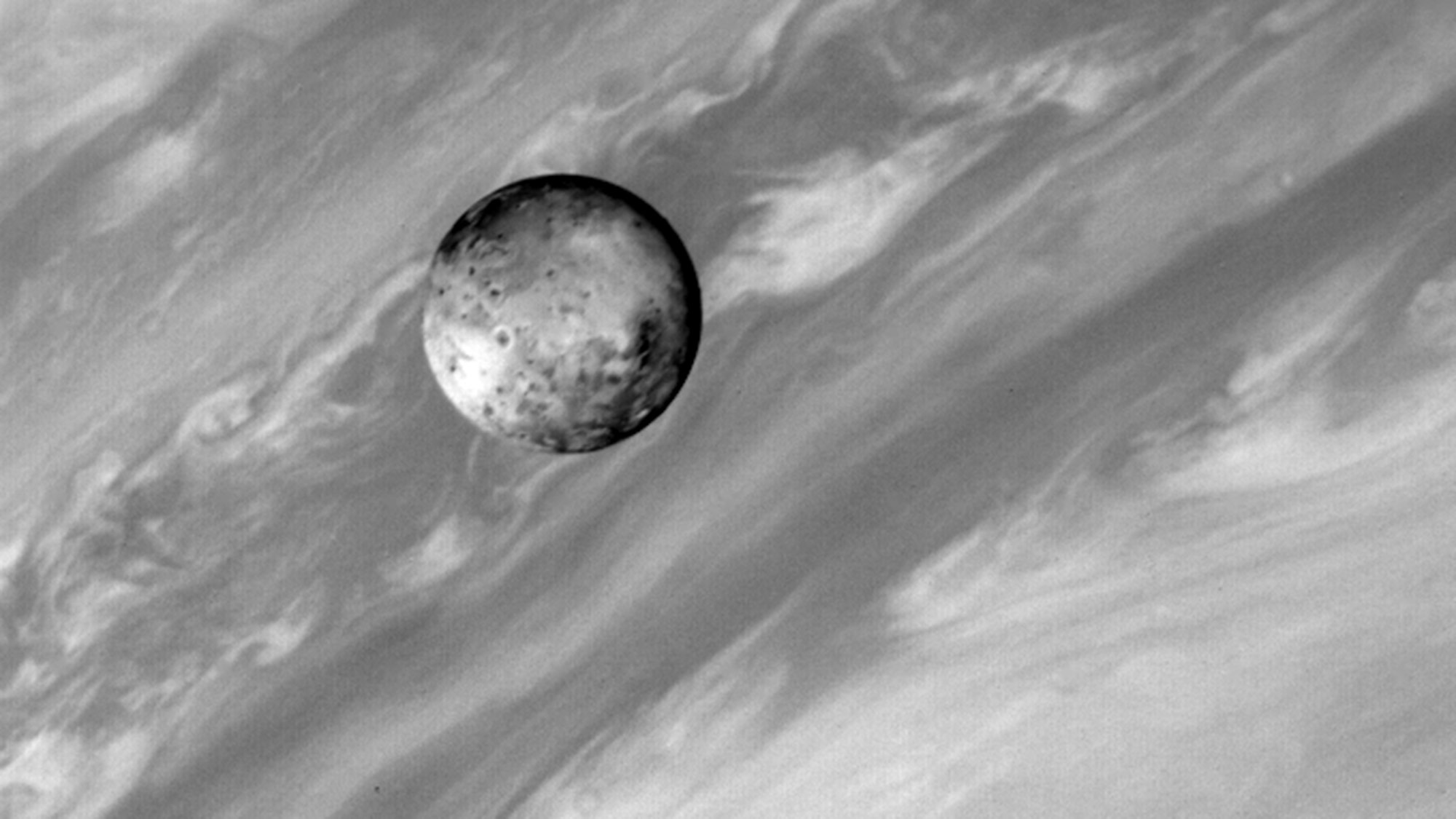
Photobomber
While mapping Jupiter, Io snuck into the frame. Voyager 1 captured the side of the moon Jupiter never sees, revealing never-before-seen details of the Jovian satellite: several circles with dark centers and bright rims may be craters unknown on the moon until now. Without further study, researchers won't know if they are impact of volcanic craters.
Credit: JPL/NASA
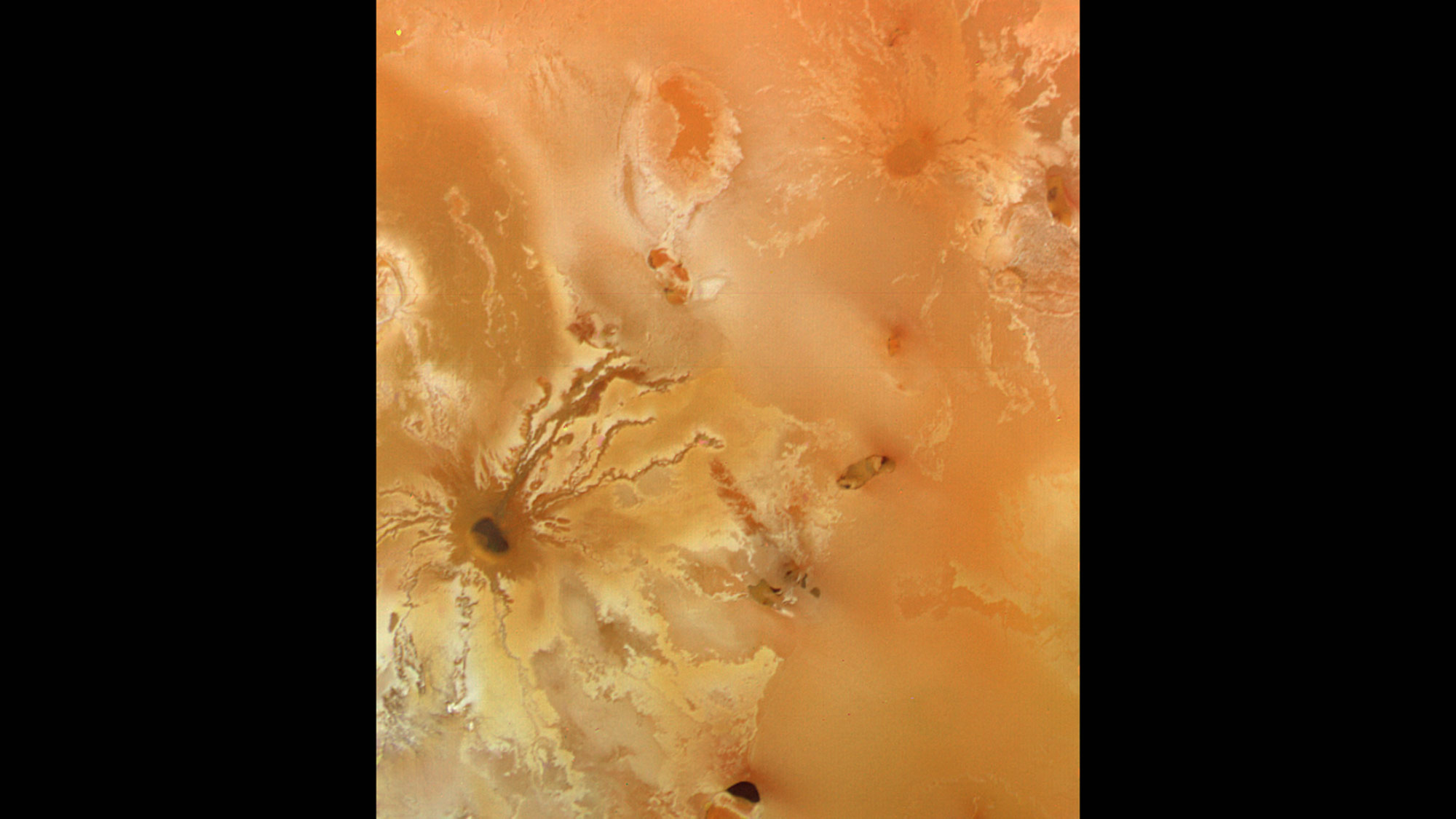
Surprising Natural Colors
A color image of Jupiter's closest Galilean moon, Io, stuns viewers with its rich colors. Scientists believe the orange and red hues arise from sulfur compounds, salts and other volcanic sublimates. While volcanic craters and lava flows may explain the dark spots across the image.
Credit: JPL/NASA

Loki, In Detail
The detailed structure of Loki, a volcano on Jupiter's Io, visualized clearly here in a Voyager 1 image. In this photo, the majority of the eruptive activity emanated from the possible rift in the dark linear feature. Also, a u-shaped "lava-lake" component reveals strange details, possibly solid sulfur "icebergs" in a liquid sulfur lake. This region claimed the hottest area on this moon at about 150 degrees Celsius.
Credit: JPL/NASA
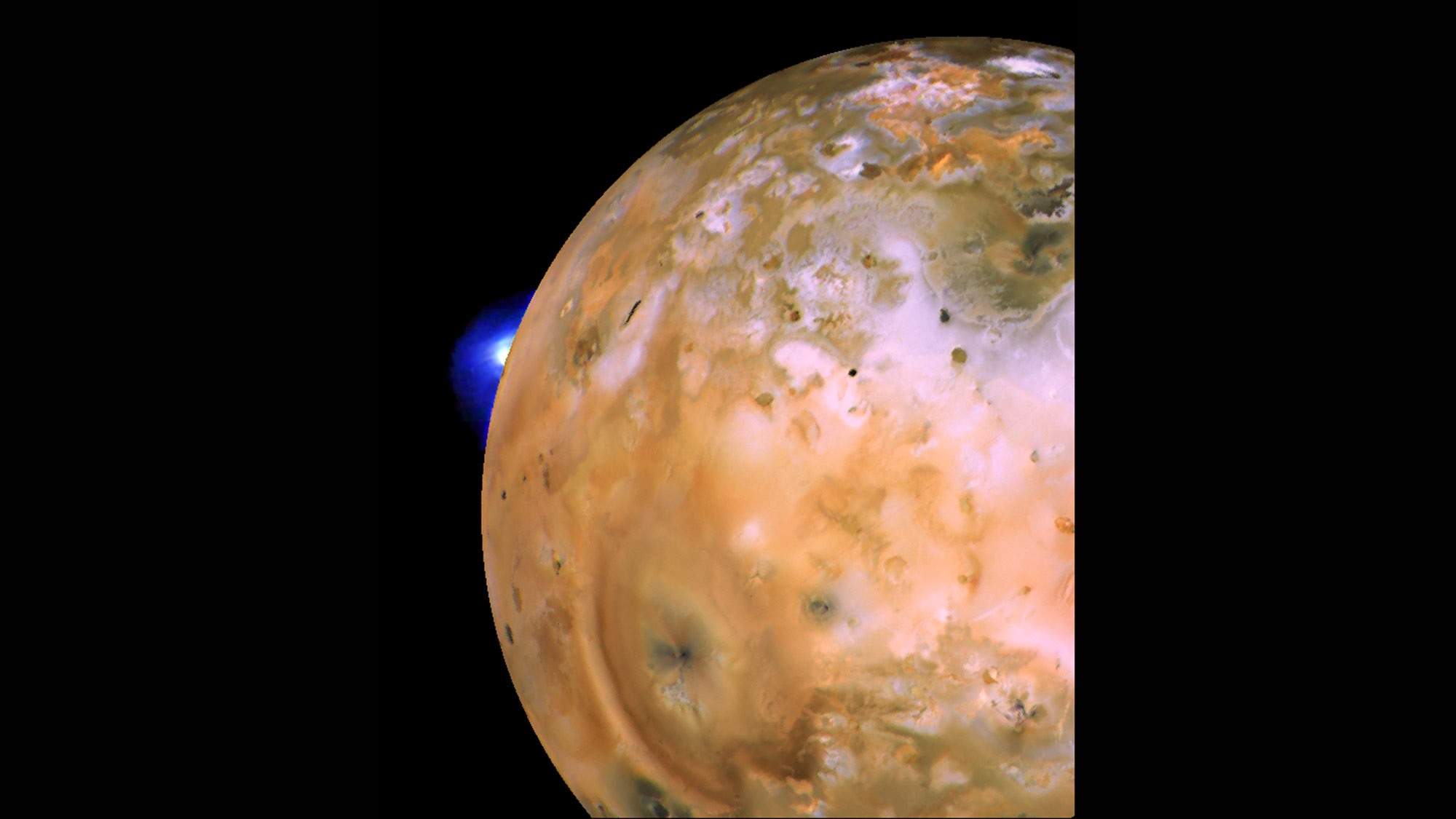
Activity Afar
An active plume near the Loki volcano shines off the horizon of Io. The mosaic also presents views of fallout deposits from the active plume Pele at the heart-shaped feature to the southeast of Loki.
Credit: JPL/USGS/NASA
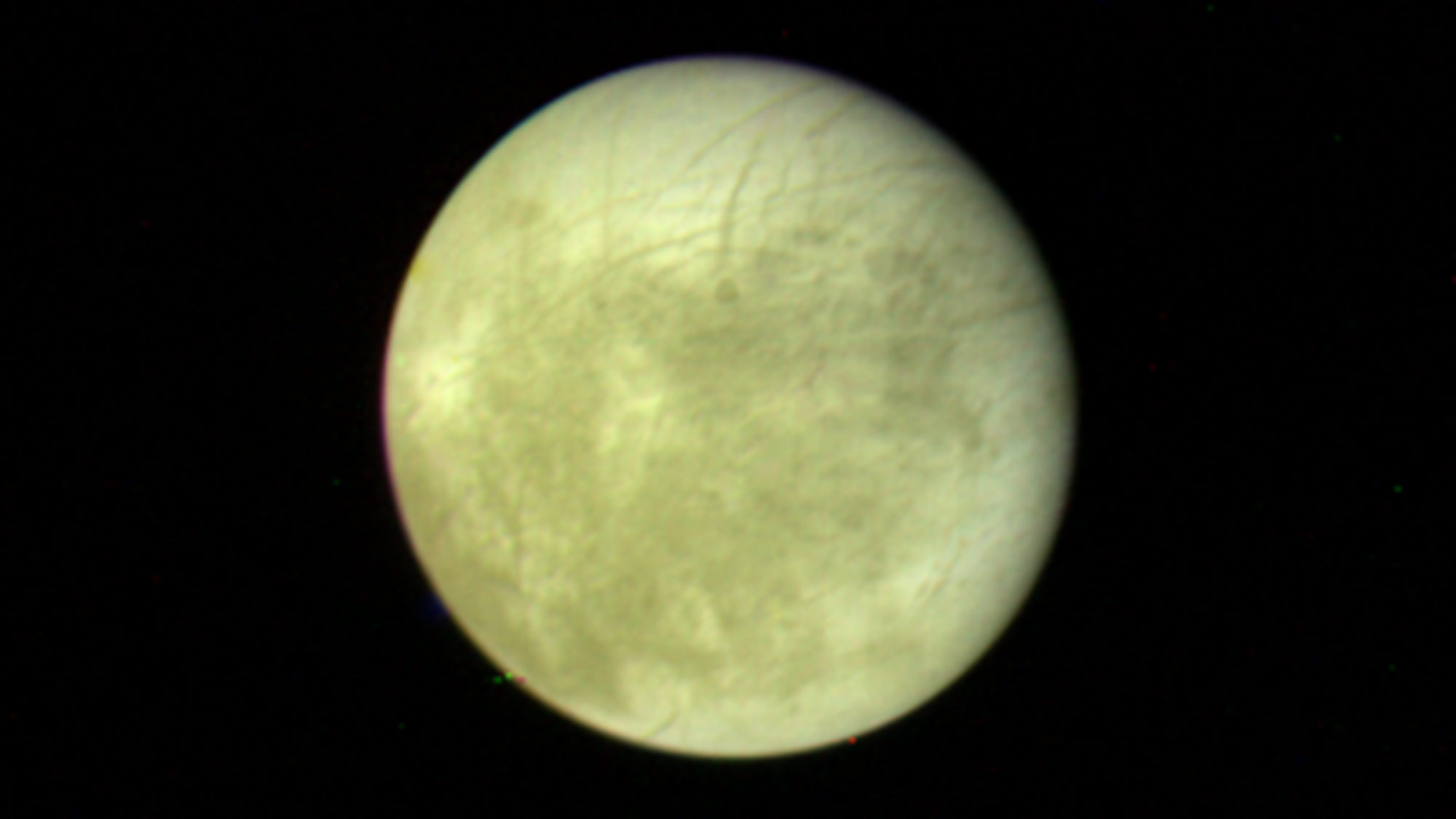
Small but Not Insignificant
The smallest of the Galilean moons, Europa displays bright areas, surmised to be ice deposits, and darker spots expected to be rocky surfaces. Long linear structures across the northern hemisphere are features unique on the satellite. One theory suggests these lines could be fractures or faults in the moon's surface.
Credit: JPL/NASA
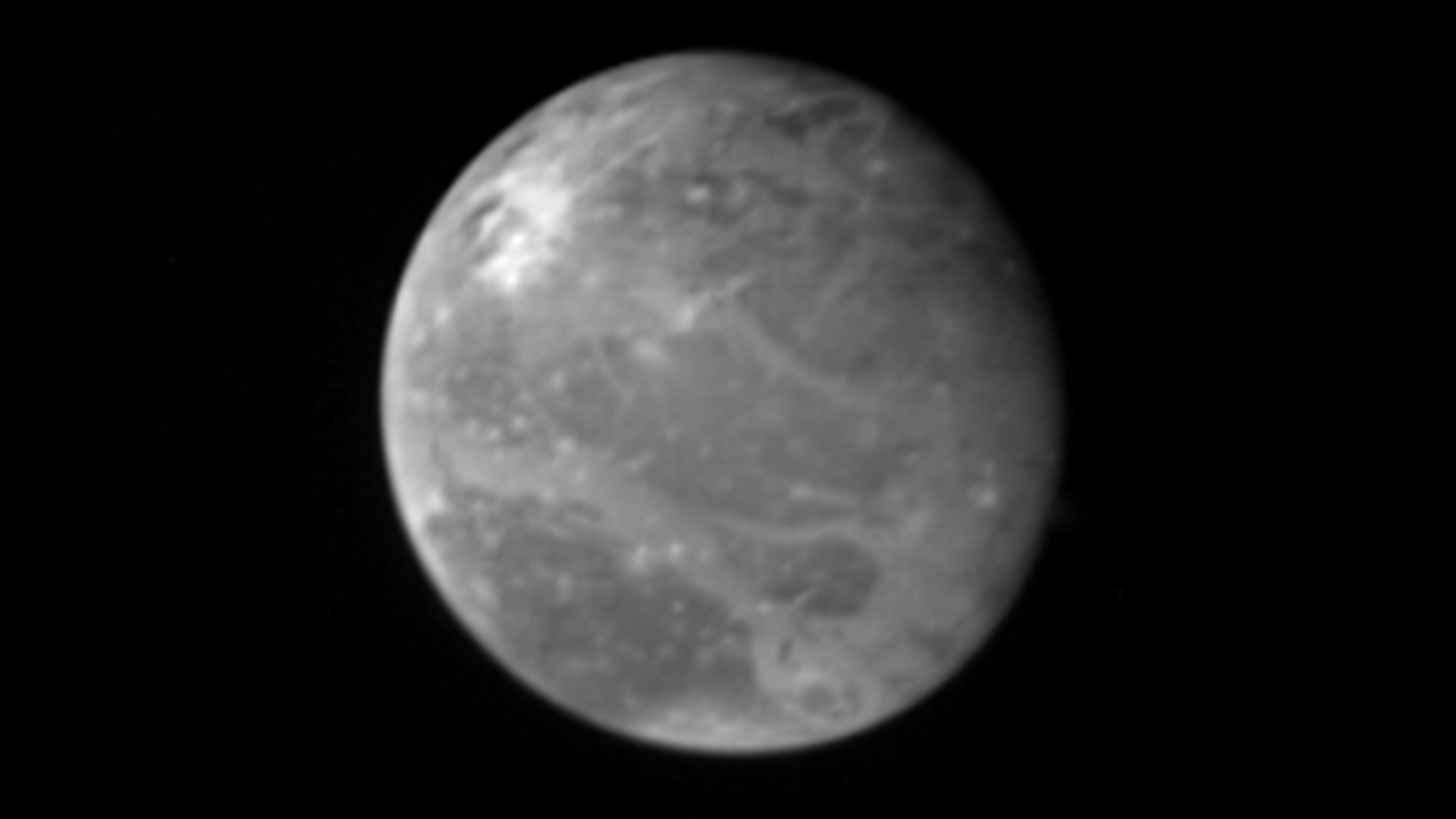
Similar but Not the Same
From about 2.6 million miles (4.2 million km) away, Voyager 1 snapped this image of Ganymede. Though larger than planet Mercury, the moon is much less dense. Ganymede, while reminiscent of Earth's moon, is four times as bright. Scientists speculate the Jovian moon could have areas, such as the north polar region, covered in water frost creating the brightness seen here.
Credit: JPL/NASA
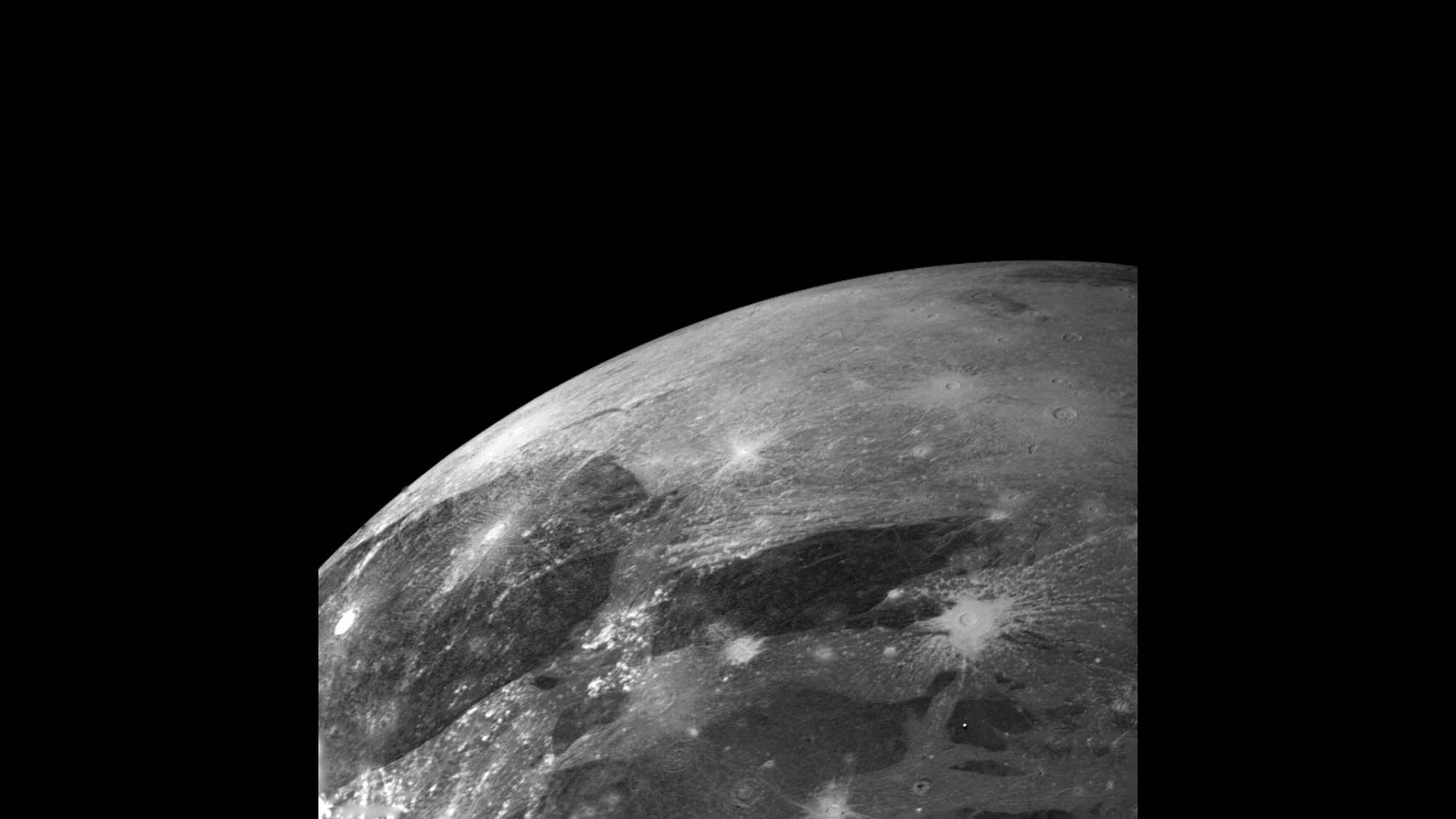
Explaining the Sights
Several bright impact craters glow brightly in Voyager 1's image of Ganymede from Mar. 5, 1979. Many older impact craters, missing their rays, are visible as well. Some of the erosion may be caused by faulting of the surface materials.
Credit: JPL/NASA
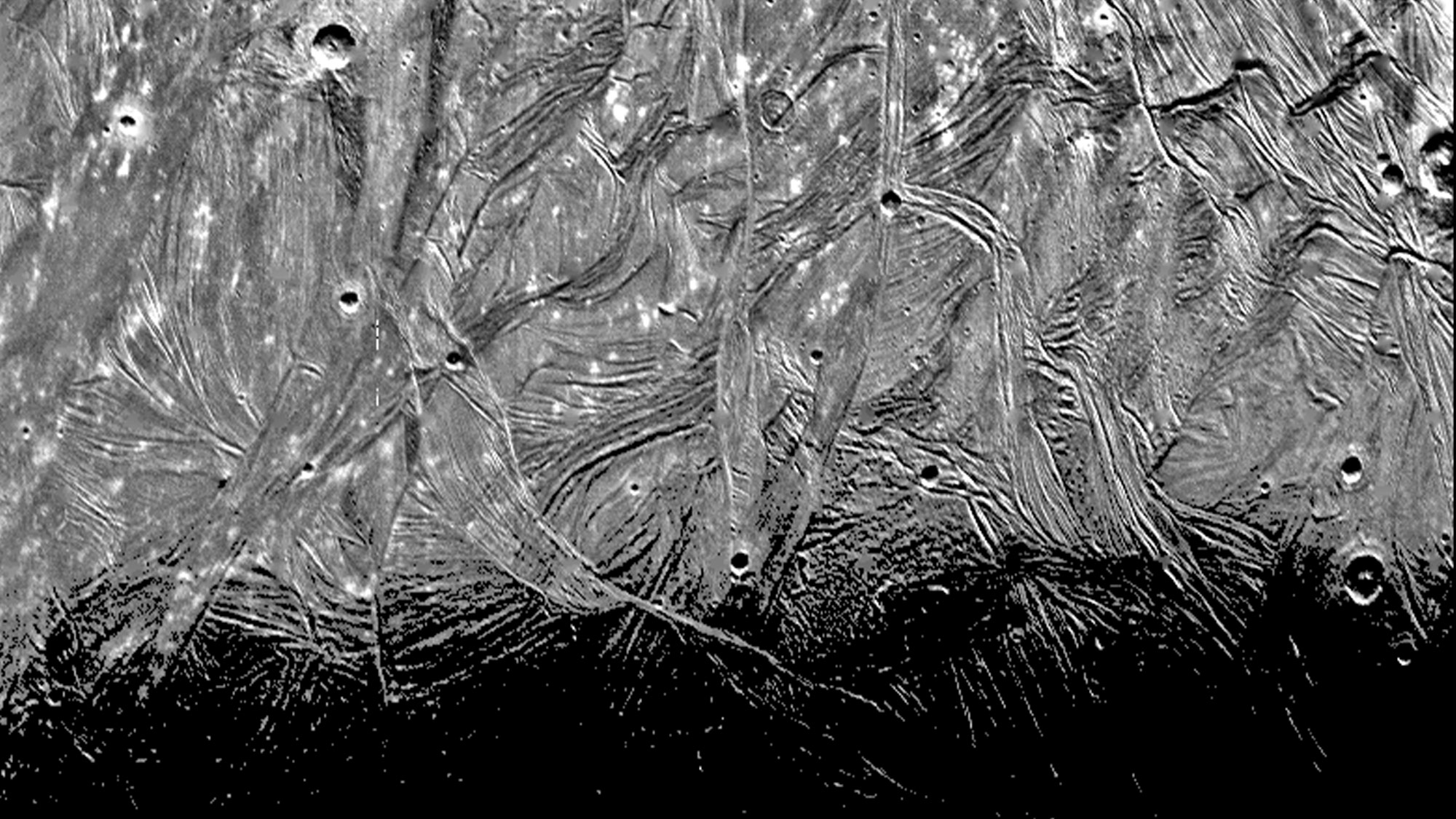
Strange Patterns
Jupiter's largest moon, Ganymede was imaged by Voyager 1 on Mar. 5, 1979. The image reveals intricate patterns of ridges and grooves. Scientists believe these features to be deformations in the satellite's thick icy crust.
Credit: JPL/NASA
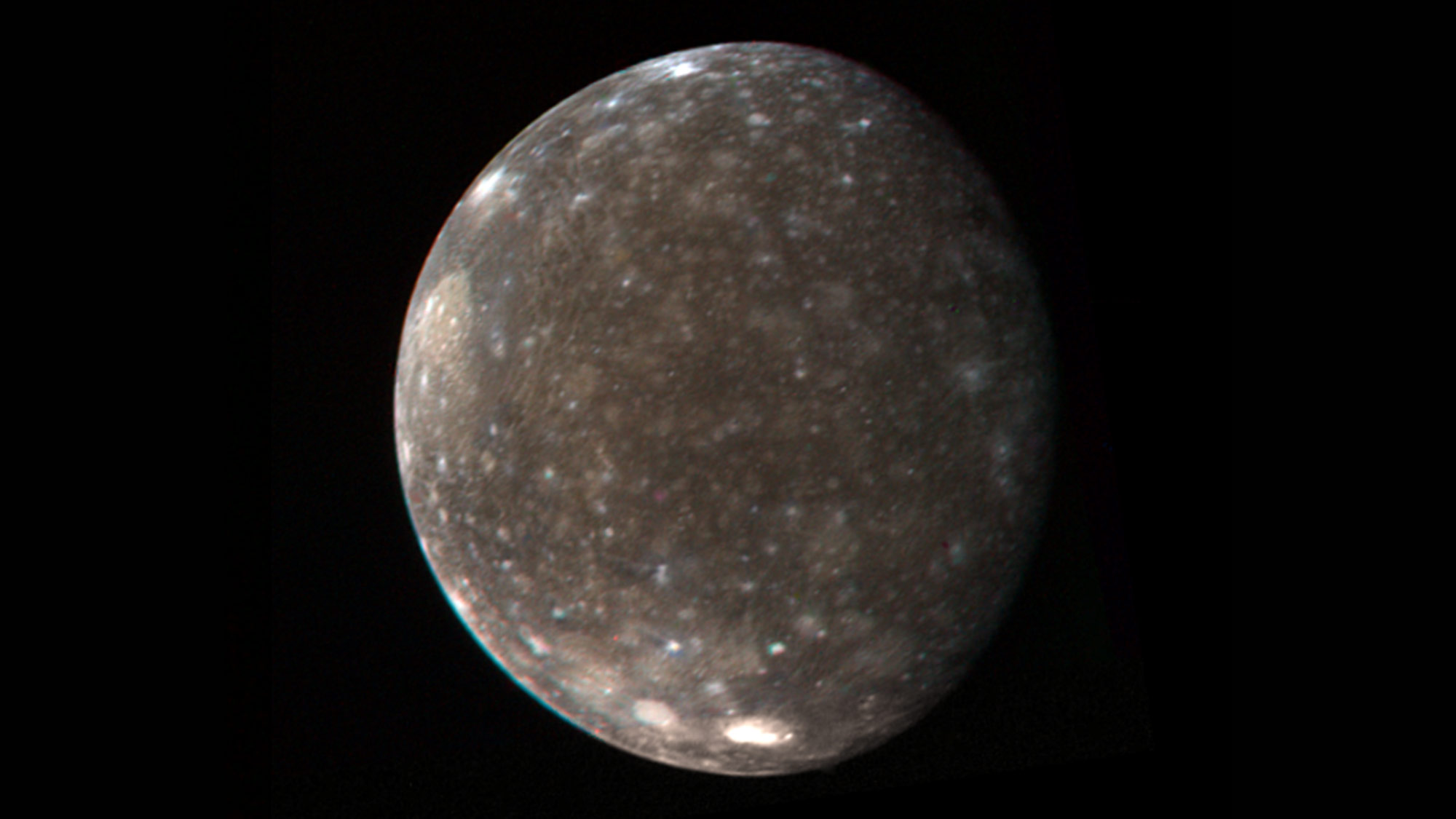
A Trio of Info
Three images of Jupiter's Callisto combine to create this high resolution photo of the satellite. A large basin-like feature, discovered by Voyager 1, appears clearly on the upper left area of the moon. Across the center of this basin a brighter contrast is seen. Researchers believe these shining areas contain more clean ice as compared to the majority of Callisto's "dirty-ice" surface.
Credit: JPL/NASA
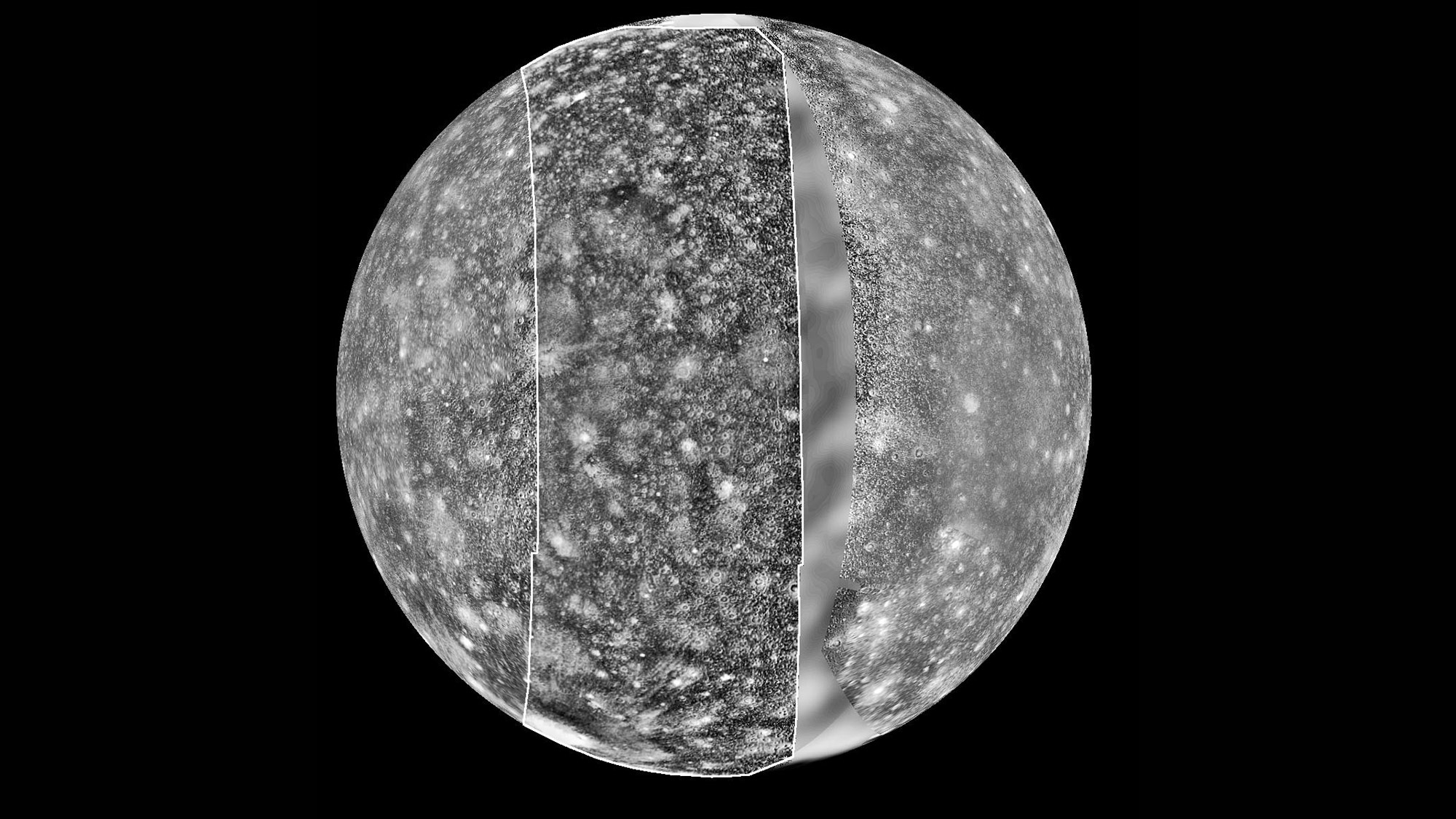
A Triad of Data
A mosaic of Callisto came from three different spacecraft. Voyager 1 contributed the left-side image and Voyager 2 provided the right-side image, both collected in 1979. The third, central portion originated from Galileo in September of 1996.
Credit: JPL/DLR/NASA
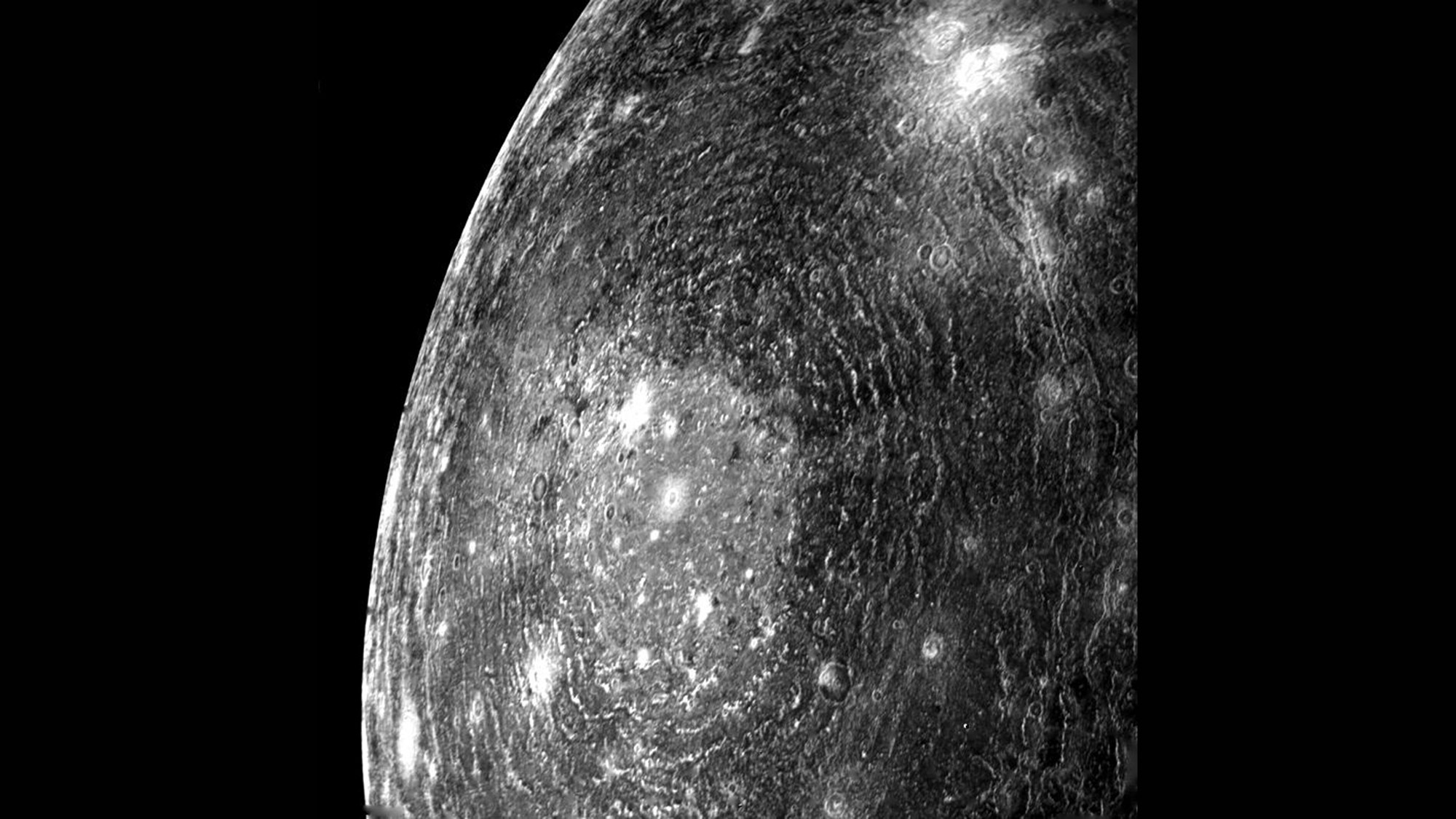
A Peak at What's Inside
March 6, 1979, Voyager 1 snapped this image of Callisto, one of Jupiter's largest moons, from almost 200,000 km away. The central focus of the image shows the complex circular structure that mirrors impact basins seen on Earth's moon and planet Mercury. Experts believe the patterns on Callisto demonstrate the planet's low density and lack of internal strength.
Credit: JPL/NASA

Christine Lunsford joined the Space.com team in 2010 as a freelance producer and later became a contributing writer, covering astrophotography images, astronomy photos and amazing space galleries and more. During her more than 10 years with Space.com, oversaw the site's monthly skywatching updates and produced overnight features and stories on the latest space discoveries. She enjoys learning about subjects of all kinds.
